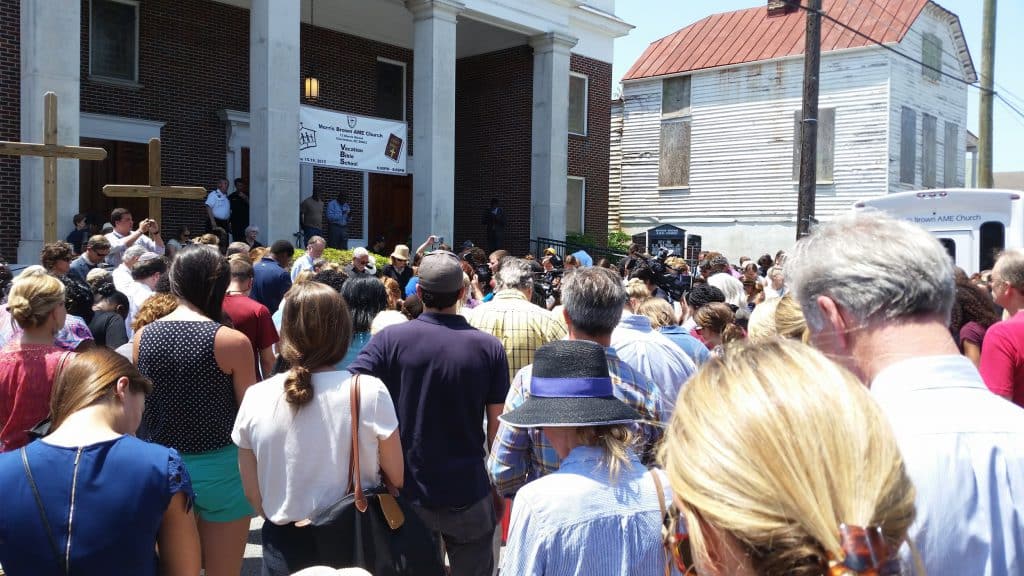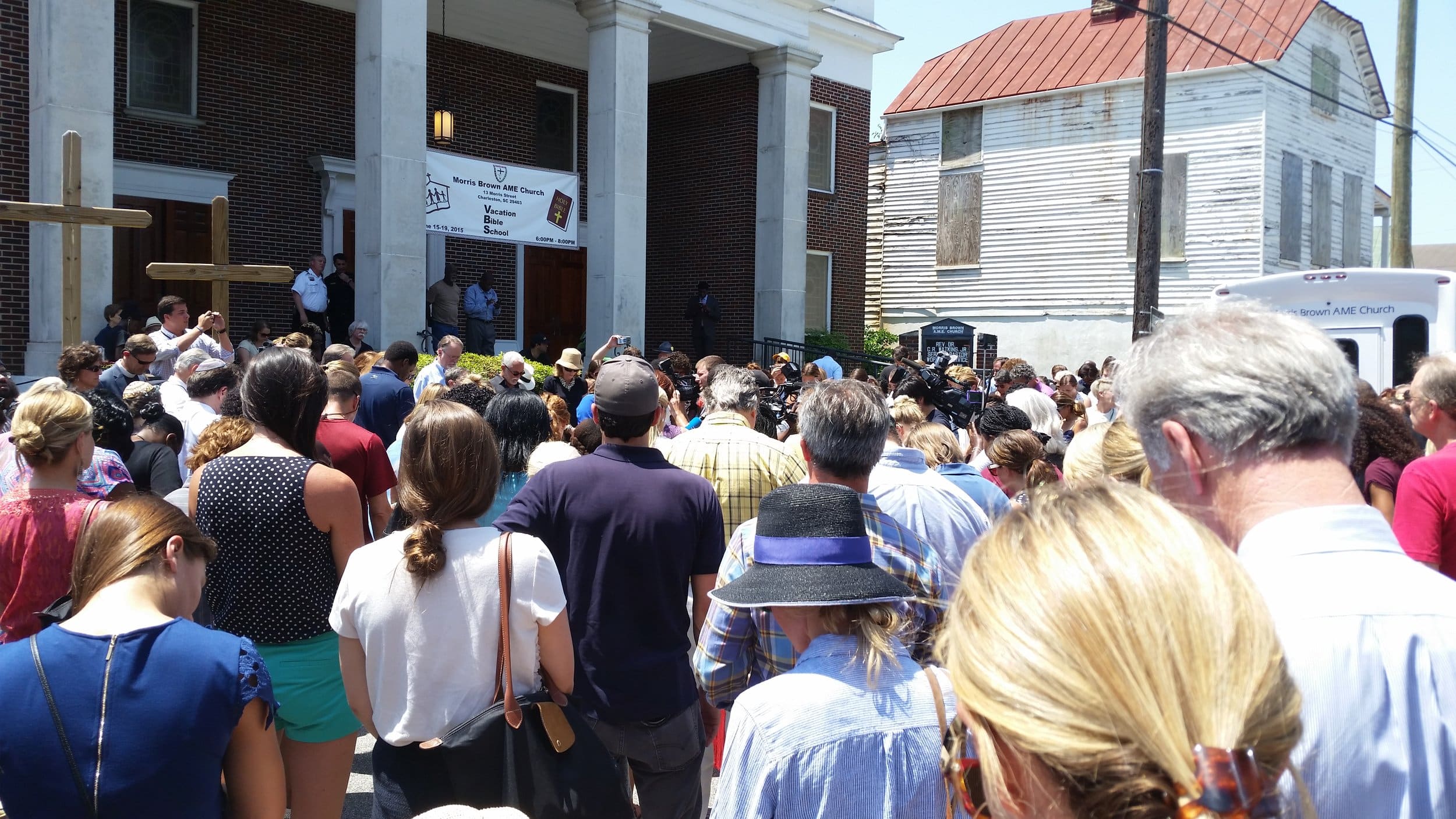
Jury’s in: Separate trials set to begin in Charleston, heightening racial tensions within city, surrounding area
Christian Segers, Assistant Editor
Photo taken outside of the Charleston church shooting memorial service. Public domain.
The separate trials of 22-year-old Dylann Roof and Charleston police officer Michael Slager are set to begin, following the massacre of African American churchgoers and the fatal shooting of an unarmed black civilian that both took place in Charleston last year.
On the evening of June 17, 2015, a prayer service held at the Emanuel African Methodist Episcopal Church in downtown Charleston, was targeted by Roof in order to incite a “race war” between Caucasian citizens and people of color. Churchgoers then looked on in horror as the gunman fatally shot nine members of the congregation, including the senior pastor, South Carolina Senator and former House Representative, Clementa Pinckney.
The accused now awaits both federal and state trials to decide whether or not he will receive the death penalty for his crimes. Federal investigators claim that the purchase of Roof’s firearm was made possible due to a system error in which the background check of the accused did not properly prevent the purchase of the weapon used. According to documents reported on by NPR, what’s now known as the “Charleston massacre” took place three weeks after the initial firearm purchase.
Questions as to motive and post-massacre intent are of greater interest to investigators at this point, than the question of Roof’s guilt/innocence. These events took place chronologically after the shooting of Michael Scott by officer Slager, but received arguably more media coverage due to the high profile eulogy speech given by sitting President, Barrack Obama.
The death of the unarmed Walter Scott took place around 9:30 a.m., following a traffic stop made due to the deceased’s taillight improperly functioning. Dashboard footage shows the officer in question conversing with Scott and the deceased fleeing the scene shortly after. Officer Slager pursued and entered in to an altercation with Scott, before firing eight rounds from his sidearm, five of which hit the deceased.
According to testimony from the officer, Scott had taken Slager’s taser and caused Slager to fear for his safety. However, video footage obtained by an eyewitness shows officer Slager picking up an object from the ground and placing it by the body of the deceased shortly after the sounds of gunfire can be heard. The object in question could possibly be the taser.
According to previous police records, both individuals involved served formerly in the United States coast guard, while Scott was generally discharged from service due to violating drug policy. The deceased was tested for drug levels shortly after his death and came back positive for cocaine. However, the officer was not without blemish on his records, as he was accused twice previously regarding the misuse of his taser on unarmed personnel. The first account of misuse was eventually cleared, but the second count led to a citation.
Dillon Webster, a senior mathematics major at North Greenville University, is a Charleston native and has recently voiced what went through his head when he heard about both the Charleston massacre and the shooting of Walter Scott.
Webster said, “Everyone is so friendly in Charleston. We never thought anything like that would happen in our city.”
Both of the instances of Charleston shootings enforce the growing idea that African Americans are being targeted by members of the surrounding “white community” due to the color of their skin. In an age where tolerance is intended to be the rule, many are confused as to why these events were allowed to occur.
“We were in shock,” Webster said.
Webster’s reaction exemplifies the growing unrest in the nation that has seen both civil protests, (such as players kneeling during the national anthem) and violent protests in the cities of Charlotte, Baltimore and Ferguson, Mo.
Charleston as a city has responded in grief to the attacks on its members and beseeches both local and federal law enforcement to seek out the facts and deliver resounding justice to those accused of their crimes.
As the general mood of Charleston remains tainted due to the ongoing legal battles of both defendants, residents remain hopeful that justice will be served on both accounts. Only after the two court verdicts can the city begin the long process of healing that it so desperately longs for and needs.

